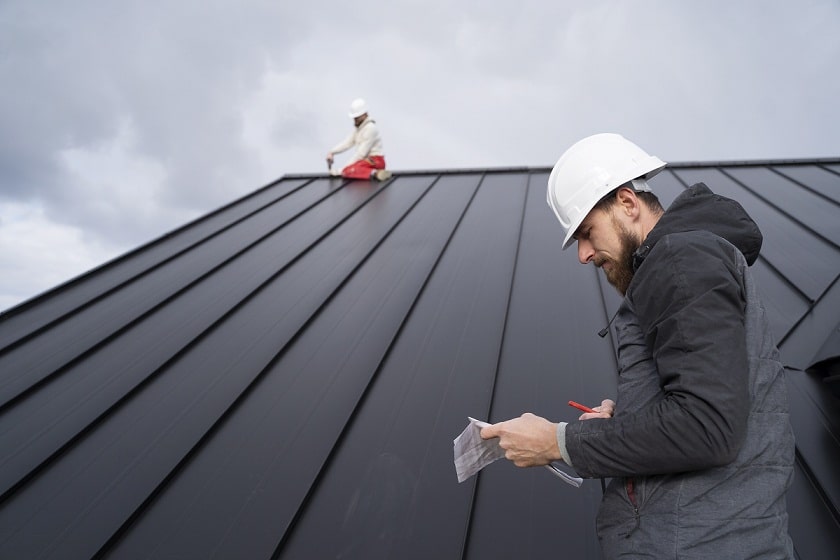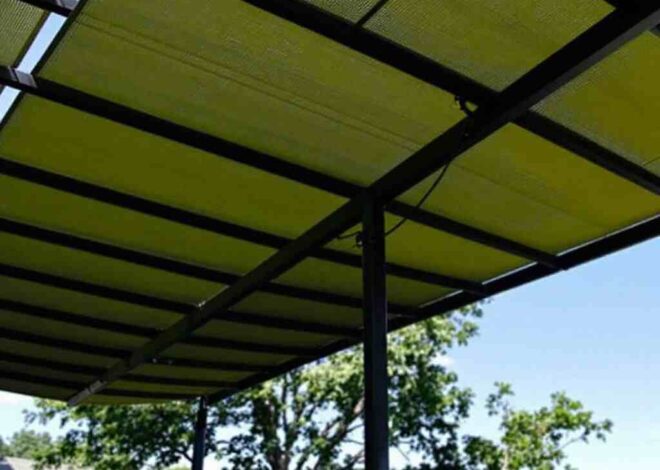
How Much Money Can You Save by Doing Your Own DIY Roof Repairs?
Are you tired of shelling out big bucks for roof repairs every time a leak springs up? Wondering if you have what it takes to tackle those repairs yourself and save some serious cash in the process? Look no further! In this blog post, we’ll break down just how much money you can save by taking matters into your own hands and becoming your very own roofing superhero. Get ready to put the power back in your wallet and give your roof the TLC it deserves!
Introduction to the topic
Have you ever looked up at your roof and noticed a few missing shingles or signs of wear and tear? If so, you’re not alone. Roof repairs are a common homeowner task that can sometimes feel daunting. But fear not! With the rise of the popular trend of DIY projects, tackling roof repairs yourself can be a rewarding experience both financially and personally. In this blog post, we’ll explore how much money you can save by taking on your own DIY roof repairs, along with the benefits, factors to consider, and steps to get started. Let’s dive in!
Benefits of DIY roof repairs
When it comes to DIY roof repairs, there are several benefits that make taking on the task yourself a worthwhile endeavor. One of the primary advantages is cost-saving. Hiring professional roofers can be expensive, but by doing it yourself, you can save a significant amount of money.
Another benefit is the flexibility and convenience that DIY repairs offer. You can work on your own schedule and take breaks as needed without having to coordinate with external contractors. This level of independence allows you to tackle the project at your own pace.
Additionally, engaging in DIY roof repairs provides an opportunity to learn a new skill. By taking on this challenge, you can gain valuable knowledge and experience that may come in handy for future home improvement projects. So, roll up your sleeves and start saving while exploring the world of DIY roof repairs!
-
Cost-saving benefits
When it comes to DIY roof repairs, one of the most significant benefits is the cost-saving aspect. Hiring professional roofers can be expensive, with labor and material costs adding up quickly. By taking on the repairs yourself, you have the opportunity to save a substantial amount of money.
DIY projects give you control over how much you spend on materials. You can shop around for the best deals and choose cost-effective alternatives without compromising on quality. Additionally, by eliminating labor costs, you can significantly reduce the overall expenses associated with repairing your roof.
Saving money through DIY roof repairs not only helps your wallet but also allows for greater flexibility in budgeting for other home improvement projects. With careful planning and research, tackling roofing issues on your own can result in significant savings that can be put towards enhancing other areas of your home.
-
Flexibility and convenience
When it comes to DIY roof repairs, one of the significant benefits is the flexibility and convenience it offers. Unlike hiring professionals who may have busy schedules, doing the repairs yourself allows you to work on your own timeline. You can choose when to start and finish the project without having to wait for appointments or delays.
Additionally, DIY roof repairs give you the freedom to tailor the repair process according to your preferences. You can select specific materials, techniques, and methods that suit your needs and budget. This customization ensures that you have control over every aspect of the repair, leading to a more personalized solution for your roof issues.
Moreover, by taking on DIY roof repairs, you eliminate the need to coordinate with external contractors or service providers. This independence saves time and effort by allowing you to directly engage in the repair process without any intermediary involvement. The convenience of being able to manage all aspects of the repair from start to finish is empowering and rewarding for many homeowners seeking hands-on solutions for their roofing problems.
-
Learning a new skill
One of the lesser-known benefits of taking on DIY roof repairs is the opportunity to learn a new skill. Whether you’re a complete novice or have some experience with home improvement projects, tackling a roofing repair can expand your knowledge and abilities in significant ways.
Learning how to identify different types of roofing materials, understanding common issues like leaks or missing shingles, and mastering techniques for repairing them can be empowering. With each project completed successfully, you’ll gain confidence in your abilities and develop a sense of accomplishment that comes from acquiring practical skills.
Moreover, as you navigate through the process of DIY roof repairs, you’ll likely pick up valuable insights into maintenance practices that can help prolong the lifespan of your roof. This newfound expertise not only saves you money in the short term but also equips you with valuable knowledge for future home maintenance tasks.
Factors to consider before attempting DIY roof repairs
Before grabbing your tools and climbing up to repair your roof, there are several important factors to consider. First and foremost, evaluate the type of repair needed – whether it’s a minor shingle replacement or a more complex flashing issue. Safety should always be a top priority when working on roofs, so make sure you have proper safety gear such as harnesses and non-slip shoes.
Additionally, take into account the equipment and materials required for the specific repair task. Ensure you have all the necessary tools like hammers, nails, sealant, and roofing material before starting any work. It’s also essential to check the weather forecast; avoid working on a wet or windy day as it can be hazardous.
By carefully considering these factors before embarking on DIY roof repairs, you can ensure a smoother and safer experience while saving money in the process.
-
Type of repair needed
When considering DIY roof repairs, the type of repair needed plays a crucial role in determining if it’s a feasible task for you to undertake.
Small repairs like fixing a leak or replacing a few shingles may be manageable for beginners with basic skills and tools. These types of repairs typically require minimal expertise and can result in significant cost savings compared to hiring a professional.
On the other hand, more complex issues such as structural damage or extensive leaks may require advanced knowledge and experience to address effectively. In these cases, it’s essential to assess your own capabilities honestly before attempting the repair.
Before diving into any DIY project, take the time to research and understand the specific requirements of the repair needed for your roof. This will help you determine if it falls within your skill set or if it’s best left to professionals who specialize in handling more complex roofing issues.
-
Safety precautions
When it comes to DIY roof repairs, safety should always be a top priority. Climbing up on a roof can be risky, so taking the necessary precautions is crucial. Before attempting any repairs, make sure to wear appropriate protective gear such as gloves, non-slip footwear, and eye protection.
It’s important to have someone else present while you work on the roof in case of an emergency. Additionally, ensure that your ladder is secure and placed on stable ground before climbing up. Avoid working on the roof during extreme weather conditions like rain or strong winds as this can increase the risk of accidents.
Be cautious around power lines and other potential hazards on the roof. Familiarize yourself with basic safety guidelines for working at heights to minimize the risk of falls or injuries. By prioritizing safety measures, you can successfully complete your DIY roof repair project without putting yourself in harm’s way.
-
Equipment and materials required
When it comes to DIY roof repairs, having the right equipment and materials is crucial for a successful outcome. Before starting any repair project, make sure you have basic tools such as a hammer, nails, ladder, safety goggles, gloves, and a utility knife. Additionally, depending on the type of repair needed, you may require specific materials like roofing cement or sealant.
Having the proper equipment not only ensures your safety but also makes the task more manageable. Investing in quality tools can save you time and effort in the long run. Make sure to check that all your equipment is in good working condition before starting any repair work.
Furthermore, familiarize yourself with how each tool is used properly to avoid accidents or damage to your roof. Safety should always be a top priority when undertaking any DIY project. So double-check that you have all necessary safety gear before getting started on your roof repairs.
Steps for DIY roof repairs
When it comes to tackling DIY roof repairs, following the right steps can make all the difference. The first crucial step is assessing the damage – take a close look at your roof to identify any issues that need attention.
Next, gather all the necessary tools and materials you’ll need for the repair. It’s essential to have everything on hand before you start working to avoid delays or interruptions.
Once you’re ready, clean and prepare the area where the repair will take place. Removing debris and ensuring a clean workspace will help you work more efficiently and safely.
Now it’s time to perform the repair itself. Whether it’s fixing a leak, replacing shingles, or sealing cracks, follow instructions carefully and double-check your work for accuracy.
-
Assessing the damage
When it comes to DIY roof repairs, the first step is always assessing the damage. This crucial step involves carefully inspecting your roof to identify any issues that need attention. Look for missing or damaged shingles, signs of water leaks, or areas where the roof may be sagging.
Take note of any potential hazards such as loose debris or slippery surfaces that could make working on the roof unsafe. Safety should always be a top priority when tackling any home improvement project.
If you notice extensive damage or if you’re unsure about the extent of repairs needed, it’s recommended to consult with a professional roofer. They can provide expert advice and guidance on how to address more complex roofing issues.
By taking the time to assess the damage properly, you’ll have a better understanding of what needs to be done and can proceed with confidence in your DIY repair efforts.
-
Gathering necessary tools and materials
When it comes to DIY roof repairs, having the right tools and materials on hand is crucial for a successful project. Before you begin, take inventory of what you’ll need to get the job done efficiently and effectively.
Start by checking your toolbox for essentials like a hammer, nails, tape measure, utility knife, and screwdriver. These basic tools will come in handy for various tasks during the repair process.
Next, consider specific materials required for your particular repair job such as shingles, flashing, roofing cement, sealant, or replacement tiles. Make sure to purchase quality products that are suitable for your roof type and the extent of damage.
Additionally, don’t forget about safety gear like gloves, goggles, and sturdy footwear to protect yourself while working at heights. Investing in proper equipment can prevent accidents and ensure a smooth repair experience.
By gathering all necessary tools and materials beforehand,…
-
Cleaning and preparing the area
Cleaning and preparing the area before starting your DIY roof repair is crucial for a successful outcome. Begin by clearing any debris or loose materials from the damaged area to ensure a clean work surface. Use a broom or brush to sweep away dirt, leaves, and other obstructions that could interfere with the repair process.
Next, inspect the area for any signs of mold or mildew growth. If present, use a mixture of water and bleach to clean and disinfect the affected area before proceeding with the repair. This step is essential not only for aesthetics but also for preventing further damage to your roof.
After cleaning, make sure the surrounding area is dry before applying any sealants or adhesives. Moisture can affect the effectiveness of these products, so it’s important to wait until everything is completely dry before moving forward with your repair.
Taking the time to properly clean and prepare the area will set you up for success when it comes time to actually perform the repair. By ensuring a clean and dry work environment, you’ll be able to tackle your DIY roof project efficiently and effectively!
-
Performing the repair
Once you’ve assessed the damage and gathered your tools, it’s time to roll up your sleeves and get to work on performing the repair. Whether it’s fixing a leak or replacing shingles, following the proper techniques is crucial for a successful DIY roof repair.
Start by carefully following any instructions or tutorials specific to your repair type. Make sure you have a solid understanding of the steps involved before diving in. Safety should always come first, so be mindful of your surroundings and take necessary precautions.
Take your time with each step of the repair process. Rushing can lead to mistakes that may result in further damage down the line. Double-check your work as you go along to ensure everything is being done correctly.
If you encounter any challenges during the repair, don’t hesitate to seek advice from professionals or online resources for guidance. With patience and attention to detail, you’ll be on your way to completing a successful DIY roof repair project!
Conclusion
In conclusion, DIY roof repairs can save you a significant amount of money while providing the satisfaction of tackling a project yourself. By following proper safety precautions, carefully assessing the damage, and using the right tools and materials, you can successfully repair your roof without breaking the bank. Remember that if the repair seems too complex or dangerous, it’s always best to seek professional help. With some time and effort invested in learning this new skill, you can potentially save hundreds or even thousands of dollars by taking on your own roof repairs. So roll up your sleeves and get ready to give your roof some much-needed TLC!


